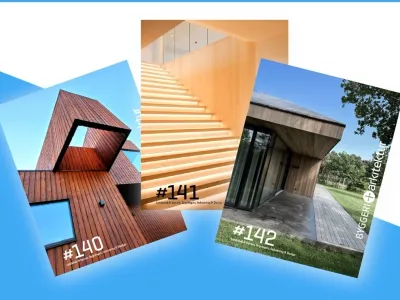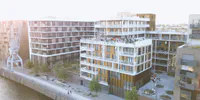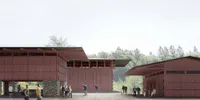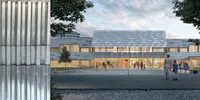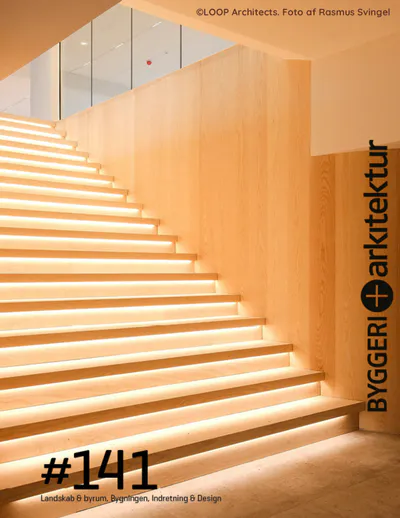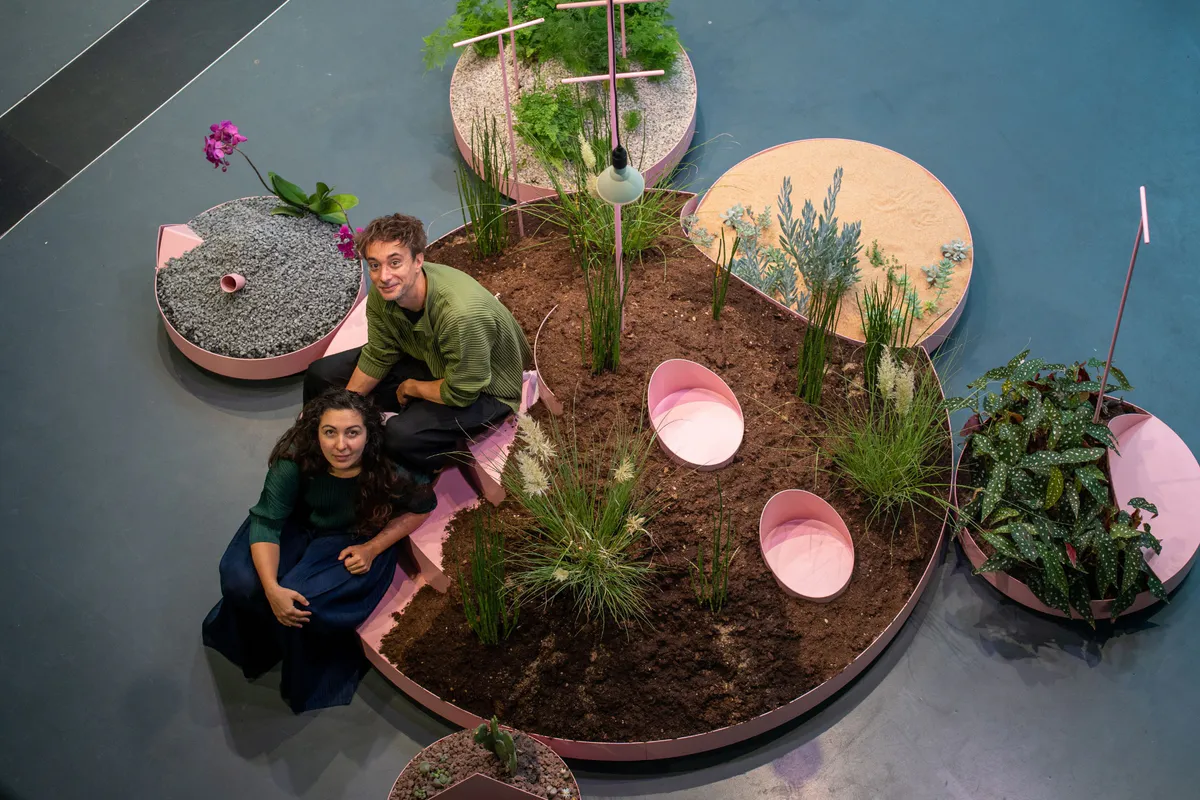
Photo by DAC.
From floating islands to bird gardens and playgrounds made of sand, Studio Ossidiana explores how architecture can become a tool for play, care, and imagination. Their projects centers on building relationships – between people, materials, and our surroundings.
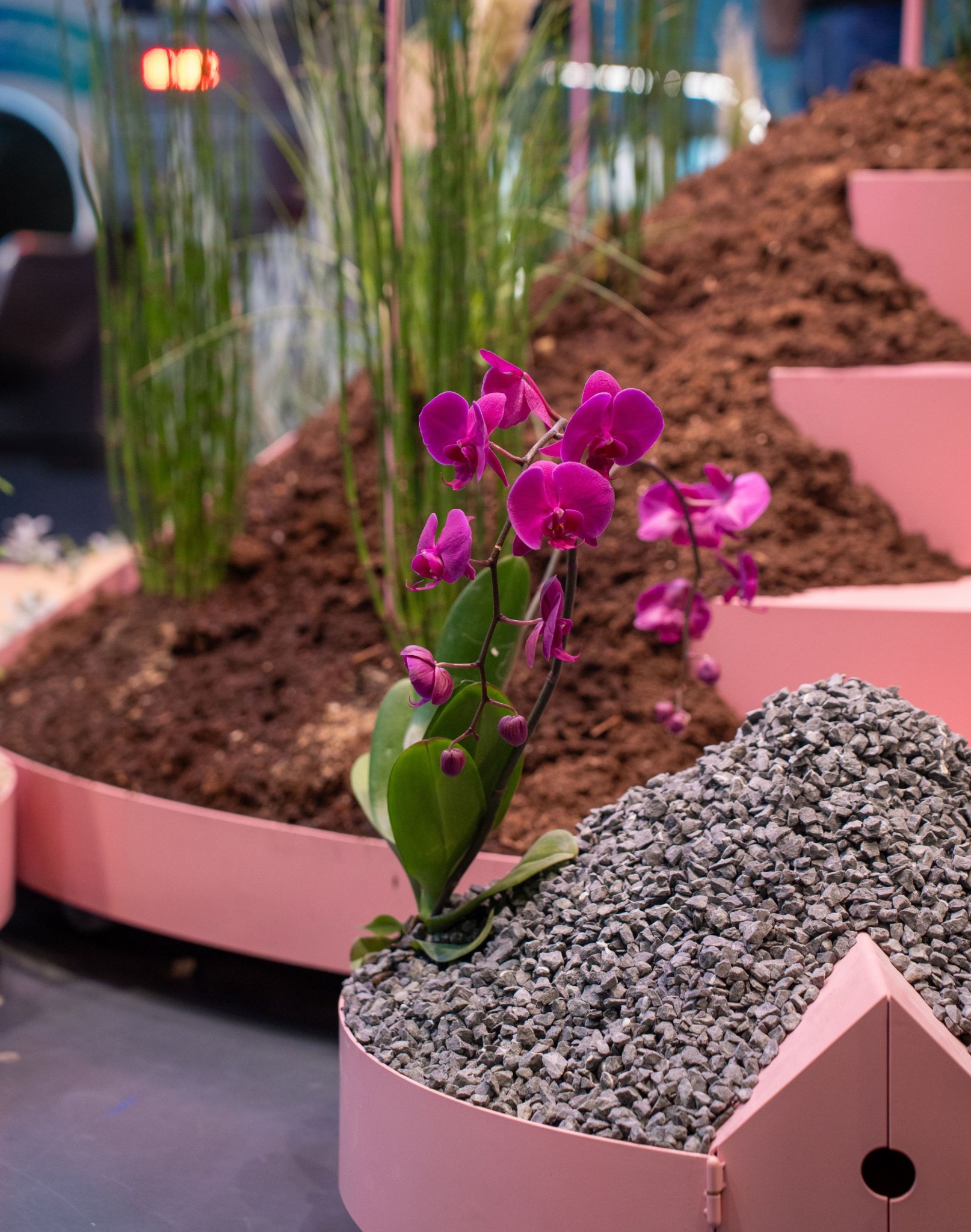 Alessandra Covini and Giovanni Bellotti from Studio Ossidiana with their contribution to the DAC exhibition Age of Nature. Photo by DAC.
Alessandra Covini and Giovanni Bellotti from Studio Ossidiana with their contribution to the DAC exhibition Age of Nature. Photo by DAC.
 Alessandra Covini and Giovanni Bellotti from Studio Ossidiana with their contribution to the DAC exhibition Age of Nature. Photo by DAC.
Alessandra Covini and Giovanni Bellotti from Studio Ossidiana with their contribution to the DAC exhibition Age of Nature. Photo by DAC.
We met Alessandra Covini and Giovanni Bellotti of Studio Ossidiana at DAC’s Age of Nature exhibition, in which they are part with their speculative project Amsterdam Allegories: 21 floating islands in Sixhaven, Amsterdam. Each island is a small ecosystem with its own identity.
- In many ways, our studio began with Amsterdam Allegories, says Giovanni Bellotti. At the time, he was studying in the U.S. and working across time zones, the pair entered competitions together.
One of those entries became Amsterdam Allegories, which is a triangular site opposite Amsterdam Central Station. Historically a mercantile hub once stored coal, metals, and grain. Studio Ossidiana reinterpreted this industrial legacy into a series of new public spaces on water: A moving coal mountain, an aviary at a metro exit, a barbecue island, a palace of metal scraps.
- It was a statement. That this little triangle could become the geographical center of a future Amsterdam – connecting north and south. The islands are conceived as mobile fragments, a public realm that can drift and reconfigure across the city, says Alessandra Covini.
Public spaces should awaken curiosity
The duo notes how contemporary public spaces are often shaped – if not decided – by developers, who may fear experimental designs could depress property values. They contrast this with Aldo and Hannie van Eyck’s postwar legacy: 700 open, unfenced playgrounds conceived as civic necessities, welcoming adults and children alike.
 Horismos Playground, Vleuten, the Netherlands, 2020. Photo by Kyoungtae Kim.
Horismos Playground, Vleuten, the Netherlands, 2020. Photo by Kyoungtae Kim.
Neutral plazas have their place, the studio says, but cities deserve more experimental spaces that gently estrange us, prompt observation, and open new relations between species and between different groups of people.
- We don’t want people to be passive users of space. We want them to rediscover themselves as gardeners, designers, cartographers – capable of shaping the city, explains Alessandra Covini.
Fire dunes and bird islands
In the project, Fire Dunes, Studio Ossidiana transformed a sandy construction site into a landscape for action, with chimneys, open-air kitchens and fire pits. Here, the public space expects activity: cooking, gathering, maintaining and reshaping.
Another commission produced a floating bird island in Vondelpark in Amsterdam. Designed as a garden with perches and feeders, it invites birds to disperse seeds and fertilize the soil – the birds would hereby have a role as co-gardeners. Similar structures later appeared in Rotterdam’s rougher port context, attracting crows and ravens rather than picturesque waterfowls.
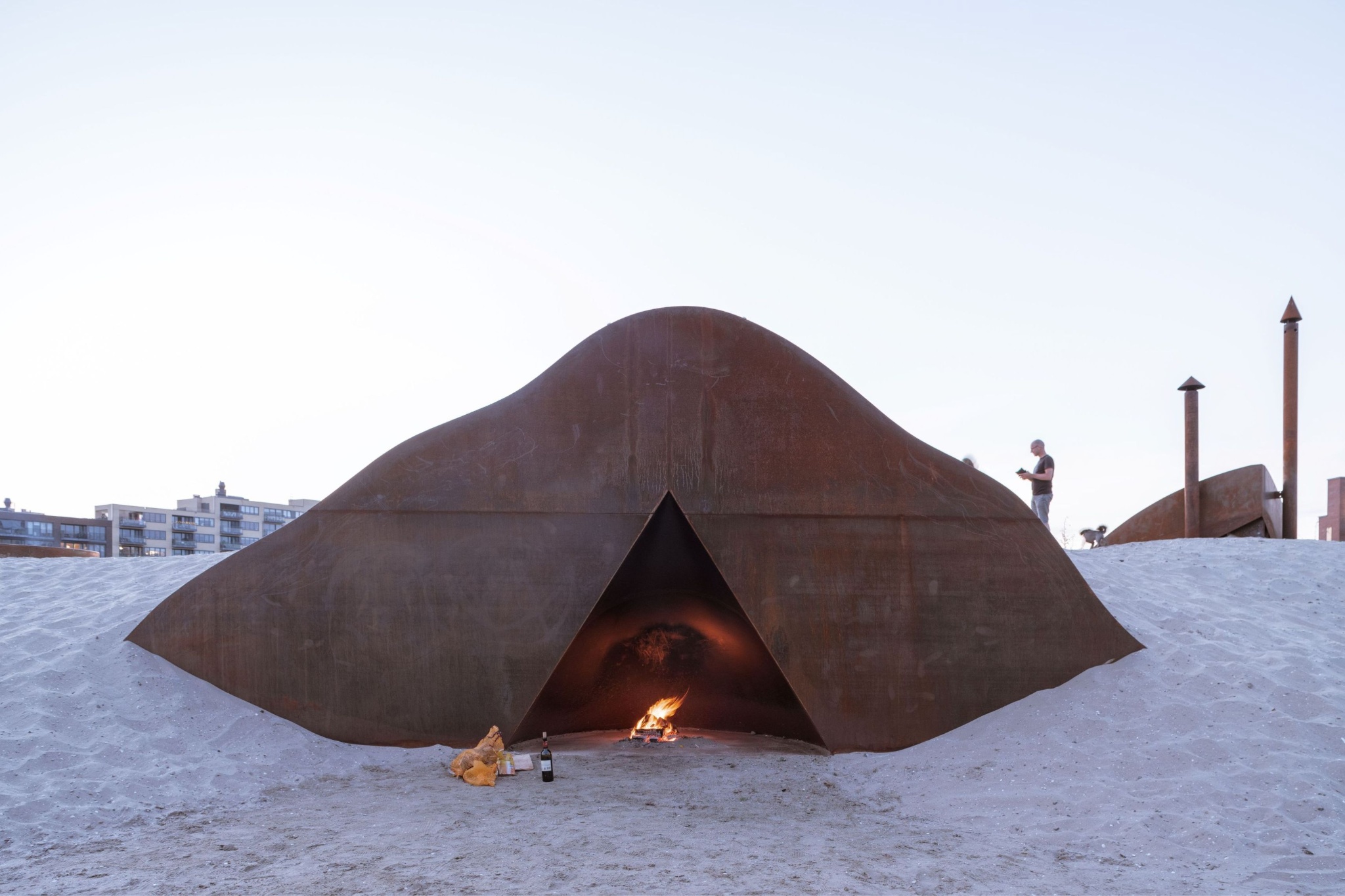 The Birds' Palace, Vondelpark, Amsterdam, 2021. Photo by Riccardo de Vecchi.
The Birds' Palace, Vondelpark, Amsterdam, 2021. Photo by Riccardo de Vecchi.
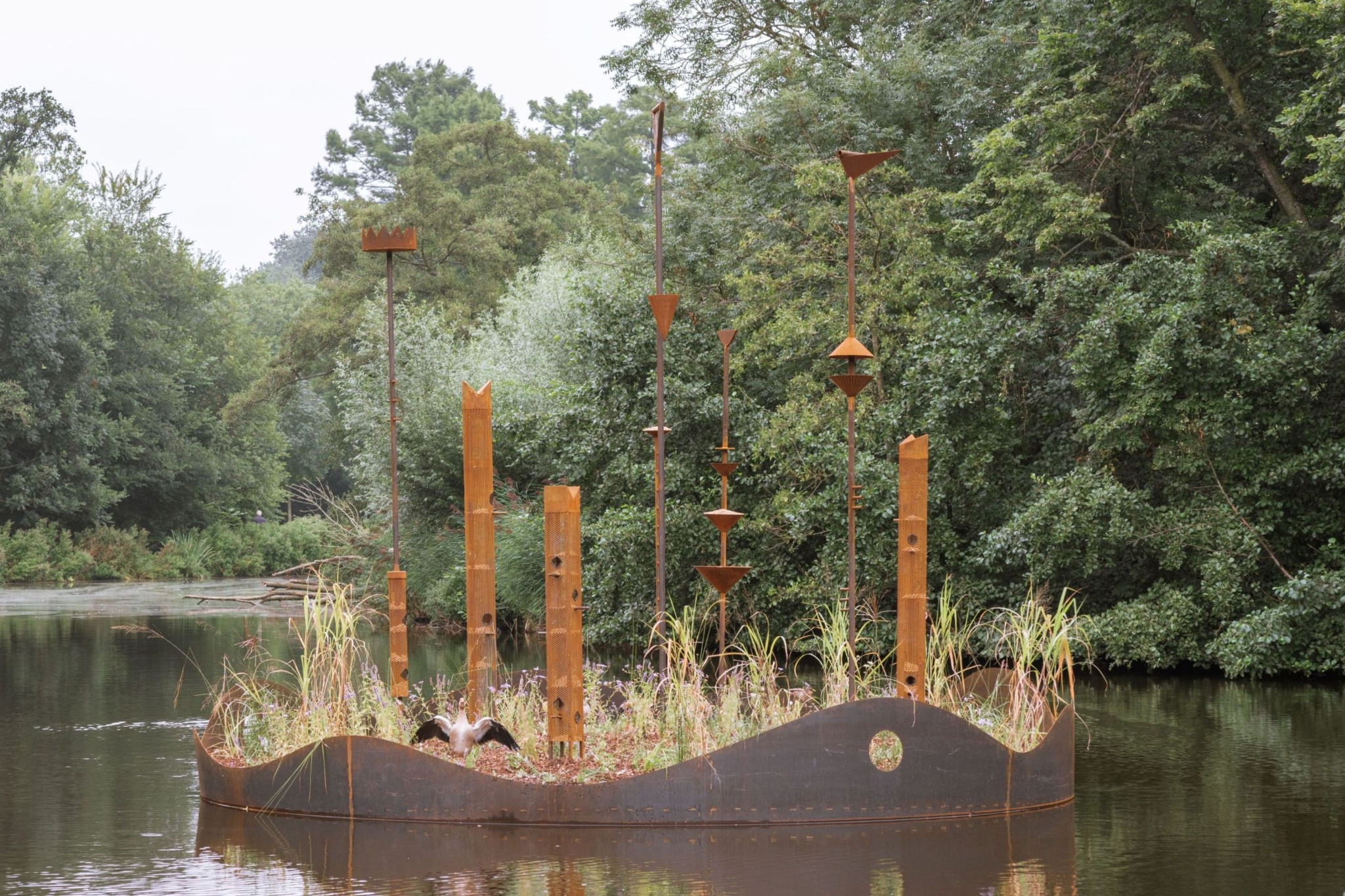 The Birds' Palace, Vondelpark Amsterdam, 2021. Photo by Riccardo de Vecchi
The Birds' Palace, Vondelpark Amsterdam, 2021. Photo by Riccardo de Vecchi
- A key part of our projects is about activity. Beauty is not a finished form, but the labor these places gives; the legibility of that work and the affection it produces. Our projects are basically instruments – large tools that invite gardening and caretaking. Even our vases are not just sculptural props; they are unruly containers meant for cultivation – smelling of soil, spilling a little, demanding care and rewarding it, says Giovanni Bellotti
Sustainability driven by desire, not guilt
Alessandra Covini and Giovanni Bellotti are both raised in the northern Italy’s Po Valley, which is a landscape of continuous transformation. And the studio embraces nature as a cultural construct: Always being made, remade, and maintained.
- I think that the assumption that nature is good and sacred is a blunder. The projection of moral values upon nature and this idealization is not helping us. It produces a paradox; that some things should be protected, and the rest is a form of bad, something to exploit as a resource, says Giovanni Bellotti and continues:
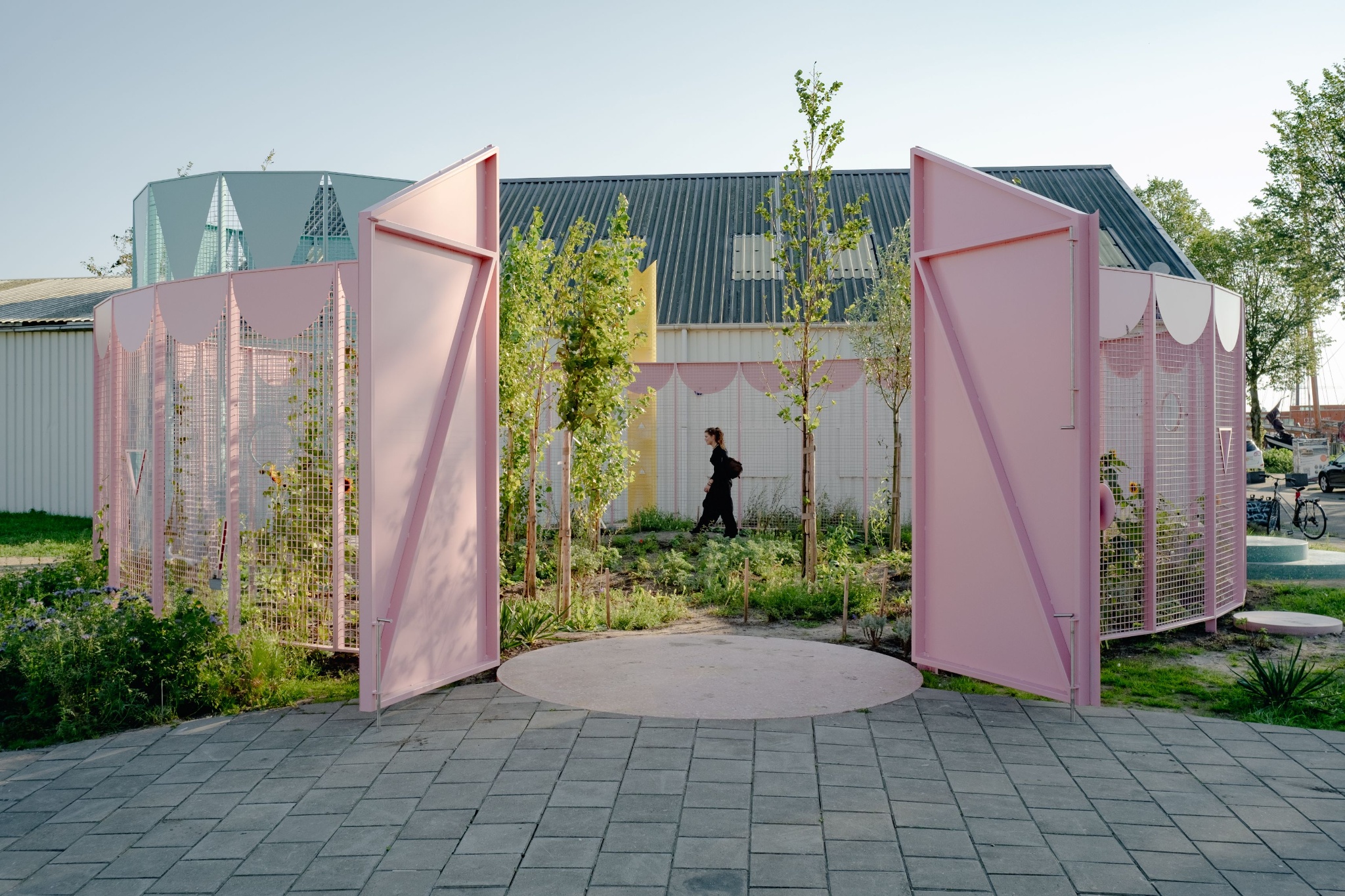 NDSM Lusthof, Amsterdam North, 2024. Photo by Riccardo de Vecchi.
NDSM Lusthof, Amsterdam North, 2024. Photo by Riccardo de Vecchi.
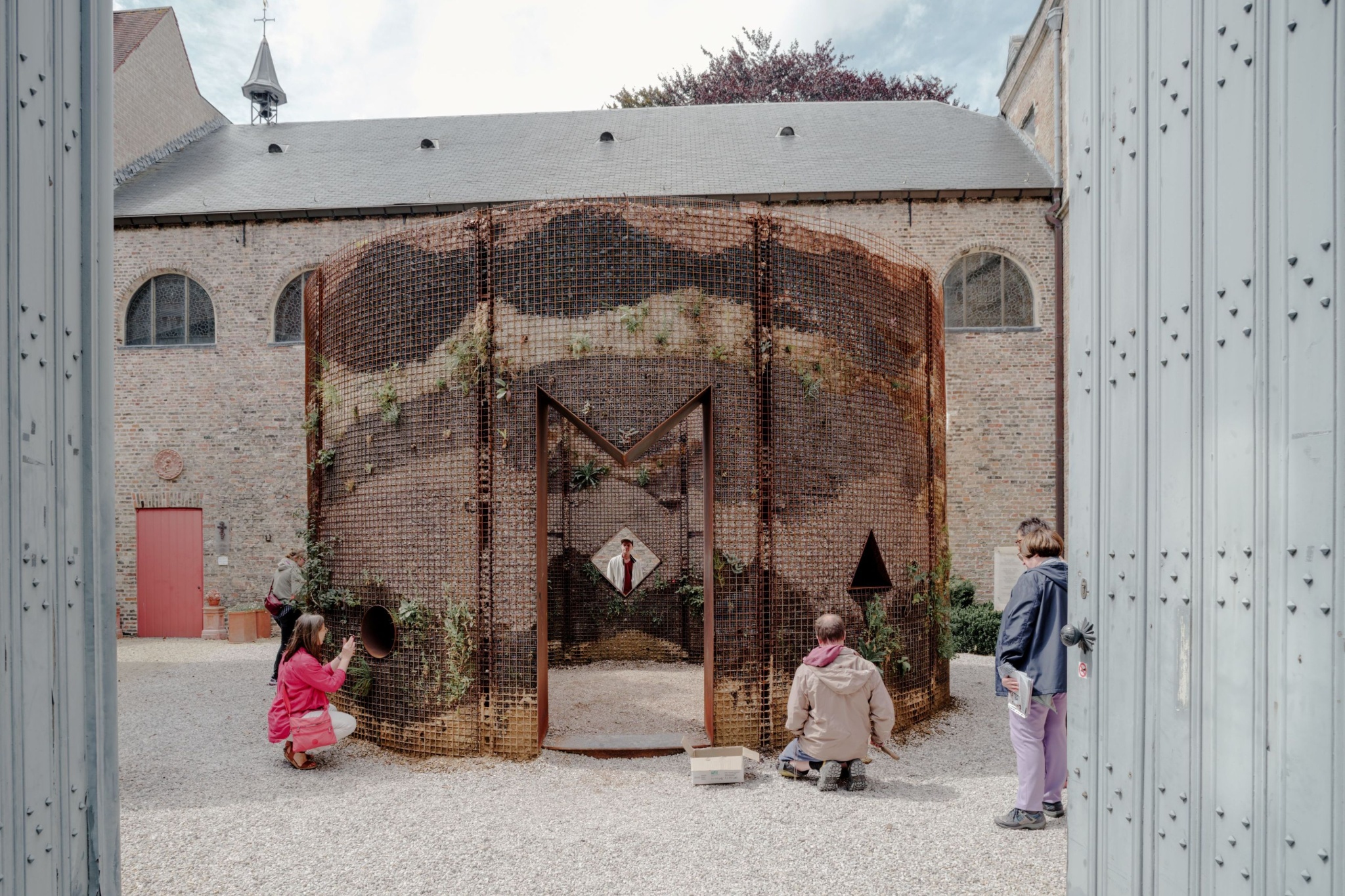 EarthSea Pavilion, Brugge, 2024. Photo by Riccardo de Vecchi
EarthSea Pavilion, Brugge, 2024. Photo by Riccardo de Vecchi
 Amsterdam Allegories, 2018. Photo by Kyoungtae Kim
Amsterdam Allegories, 2018. Photo by Kyoungtae Kim
- We need to embrace or desire change and have a relation to architecture – like a dear dress you keep mending. This more intimate relation to our buildings is what I hope for as a driver for sustainability – rather than we build the same way, but with new materials. I believe you can find profound happiness from forming relationships with the world and nature. Change should be driven by joy and intimacy with our surroundings – not fear.
 Amsterdam Allegories, 2018. Photo by Kyoungtae Kim
Amsterdam Allegories, 2018. Photo by Kyoungtae Kim
 Amsterdam Allegories, 2018. Photo by Kyoungtae Kim
Amsterdam Allegories, 2018. Photo by Kyoungtae Kim
 Amsterdam Allegories, 2018. Photo by Kyoungtae Kim
Amsterdam Allegories, 2018. Photo by Kyoungtae Kim
As an example of this way of thinking, Studio Ossidiana explored in a project in Bruge the idea of treating a building like a garden – seeing cracks and surfaces as alive and worthy of touch, changing how we look and care. They created a seasonal pavilion using varied soils and crushed shells, constantly watered and mixed: An evolving experiment where authorship belonged as much to the caretakers as the designers.
For Studio Ossidiana projects are never standalone. They see their practice as one ongoing work, evolving from the 21 floating islands of Amsterdam Allegories – all fragments of possible worlds that require participation. Alessandra Covini explains:
- It can be a frightening thought, but I don’t believe humans are the last beings who will inhabit this planet. As architects, we’re not here to save humanity or the planet. But we can create beauty by building relationships – with materials, with each other, and with other species. That connectedness is enough for us.

